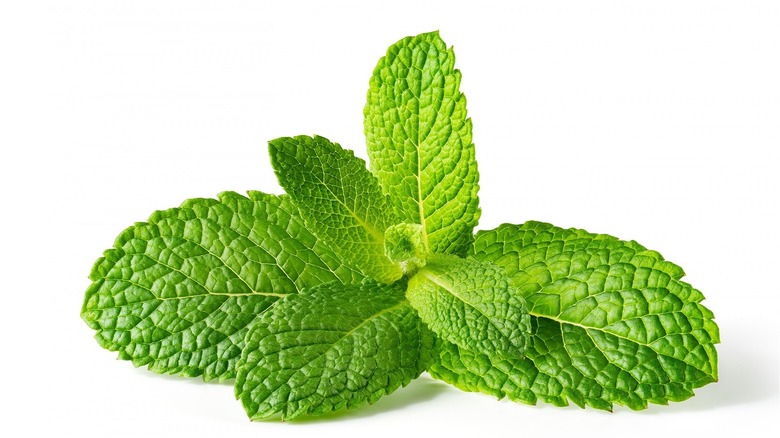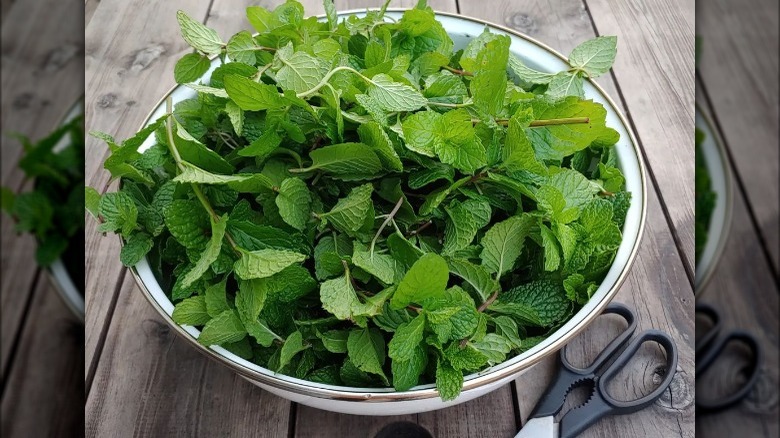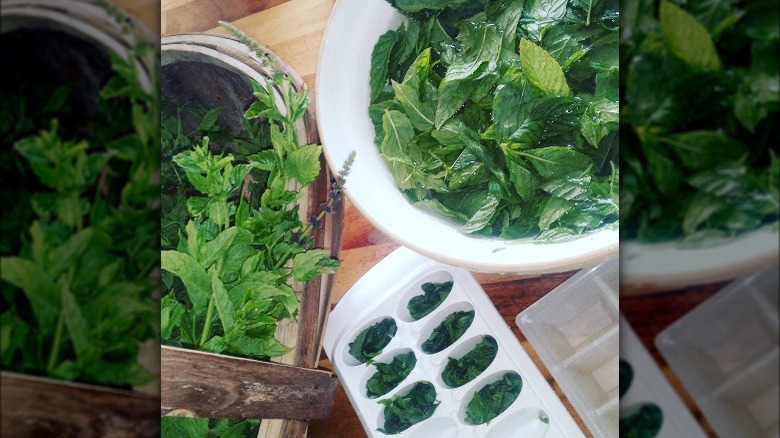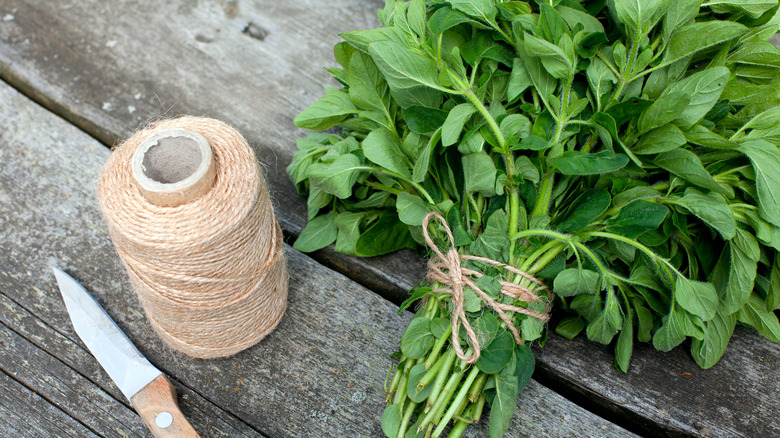How To Keep Mint Fresh
Growing mint is relatively easy. Keeping it from taking over everything else in your garden isn't. Yes, the mint plant and its rapidly spreading runner roots can make even the most novice gardener look like an expert green thumb. And, thankfully, even if this wily herb does take over, there are a multitude of ways to put its leaves to good use.
Mint is a popular holiday flavor, but it's so much more than that. One of the easiest ways to enjoy mint's flavor and health benefits is to make your own mint tea. According to Elizabeth Rider, just add 5-10 leaves to hot water and let them steep for a bit. Voila: You're now getting a healthy dose of Vitamin A and antioxidants in your cup. You can also try Jamie Oliver's mint sugar: Simply toss a handful of fresh mint into caster sugar and grind it up using your mortar and pestle. Now you have greenish sugar that smells (and tastes) minty fresh — Oliver recommends pairing it with pineapple. And, of course, you can always embrace Mediterranean cuisine by whipping up your favorite tabbouleh recipe.
But what if you wish to save some of those treasured sprigs to savor a week from now? Or in the dead of winter? Thankfully, there are a few proven methods for preserving fresh mint.
Refrigerate your mint
No matter which method you are planning to use to preserve your mint, you should begin by running it under cold water. This not only washes off foreign (and potentially disturbing) particles, but it also keeps your mint from wilting. Master Class reveals that one way to ensure your leaves thrive in the refrigerator is by putting them upright in a jar (very much like a treasured arrangement of roses), filling the jar with water, and placing a loose-fitting plastic bag over top.
That's not the only method either. A Couple Cooks recommends moistening (not soaking) a paper towel and wrapping your mint leaves within it. Put the dampened towels in a zip-lock baggy and it should keep your herbs healthy for about three days. Yes, three whole days of delicious homemade mint juleps. One caveat: Don't zip up the bag, or your mint will become too wet.
Three days isn't a very long time. What do you do if you want these green leaves to last you through the season of ice and snow?
Freeze your mint
When it comes to having access to mint in the middle of winter, there is good news. Frozen mint lasts for about six months. Yes, in the midst of the January freeze, you will still be able to enjoy the fresh flavor of mint by correctly following one of two proven mint-freezing methods.
The first technique involves freezing whole leaves. Foods Guy begins by saying you should start by washing and thoroughly drying your mint leaves. Then, lay them on a baking sheet in a single layer without overlap. Cover them with plastic wrap to keep the herbs in place and protect them from moisture. Place the tray in your freezer overnight and, once the mint is frozen, transfer it to freezer bags.
Master Class presents a method of freezing mint in ice cubes. Remove the leaves from the stems, wash and dry them, and place them in the slots in an ice cube tray. Next, add water and put the whole tray in your freezer. When they're frozen, move your mint cubes to a freezer bag. You can either throw the cube straight into a dish you're cooking or thaw it out first. Finally, you won't have to find a mint substitute for your famous Greek meatballs recipe.
Dry mint leaves to preserve them
There are several ways to dry mint. You can always use a food dehydrator, but there are also methods that don't require the purchase of a new appliance. Master Class points out that you can dry herbs in your oven. Simply place your mint leaves on a baking sheet, ensuring that they don't overlap. Put them in an oven set to 180 degrees F and let them bake for 2-4 hours. When they look crispy, they're officially done. Don't let them get brown, though — you want the mint leaves to stay green.
You can also air-dry them. Alpha Foodie says to simply create a bundle of mint (similar to the way parsley is sold at your supermarket) and tie the stems together with string. Next, you hang it upside down (like a sleeping bat) until the leaves are "crumbly to the touch." This can take anywhere from two days to two weeks. You should only use this method if you have a warm dry place for your mint, as you don't want it to mold. It must also be kept away from the sun or it will turn brown. Some people hang them in paper bags to dry to keep them dust-free.
Dried mint can last for up to a year and is best stored in an airtight glass container.



